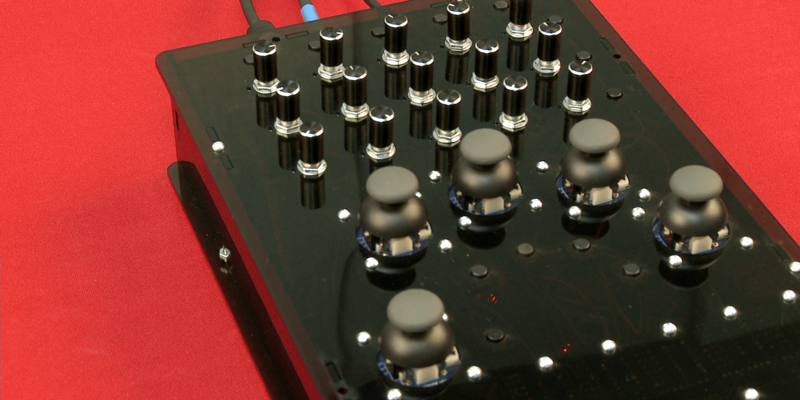[Ivan Franco] sent us this great synthesizer project that he’s working on. Or maybe it’s more like a synthesizer meta-project: a synthesizer construction set. You see, what Pryth has is a Raspberry Pi inside that’s running a custom distribution that includes SuperCollider to generate the sound, OSC for the communication layer, and a Teensy with up to 80 (!) multiplexed analog inputs that you’ll connect up to whatever hardware you desire.
With the computer inside the box — the Raspberry Pi in question — you can easily make this system into a standalone musical instrument, without tethering it to your laptop. Or you can tether it, and using a web interface that’s hosted on the Pi, write new SuperCollider programs for your instrument, changing the way it behaves. And of course, if you’re already a SuperCollider or Raspberry Pi expert, you can work on the Pi directly.
The system is brand new, but check out the Mitt synth device that [Ivan] already made, with a video embedded below. It’s a good overview of one of the possible hardware configurations, and a sweet demo of a couple SuperCollider routines.
[Ivan] is trying to create an interesting and easy-to-use empty vessel for you to pour your hardware and software synthesizer dreams into. Everything is open source, and aside from the Pi and the price of potentiometers, this is a dirt-cheap device. You’re not going to be limited by SuperCollider, and we’re guessing that you’re not going to be limited by 80 inputs either. What’s the craziest sound-maker you can think of?

















Am I the only one thinking about being at the helm of the Normandy at the beginning of the video ?
Wow, Awesome! – best audio project that I have seen in a long long time and there is so much that must have gone into software development.
Awesome! This synthesizer really redefined the concept of “writing” a song!
Awesome indeed
[Ivan]’s builds are so super clean and retro modern. I love them. Wish I had those skills.
Most of the Teensys have one or two analog outputs, it would be interesting to use that (or even just lower quality pwm) and forgo the Pi for audio creation and output, though implementing something like Super Collider for the Teensy to create the audio might be tricky depending on the complexity of the sound. Of course, the web interface on the Pi is nice! A really cool project!
I’d almost agree about the Teensy standalone, but the Pi brings so much more processing horsepower and space for sample storage that it really is a qualitatively different beast. SuperCollider is something else. And I bet it’s way too complex to run in real time on a micro, but I’d love to be proven wrong. :)
Which is totally _not_ to say that you can’t build an awesome synth out of a Teensy, or that sometimes it’s actually really inspirational to have some arbitrary constraints. But my understanding of this platform is that [Ivan] is trying to figure out what happens when the tech/electronics/software is so advanced that there are no constraints.
Theres an audio adaptor with a HighEnd DAC available for the Teensy. This is a perfekt base for a smaller synth. Add such really nice controls and you can build a small noisebox based on this great controller design. There is also an graphial editor for the teensy audio adapter. Not so simple to use, but an idea for a simpler noise box.
check mozzi: http://sensorium.github.io/Mozzi/
A nice solution, but with some strange disadvantages:
The poor audio out with a USB DAC. Add a Cirrus Logic Audio Card (or a hifi berry) and you’ll get a perfect (and fast) audio. Using a USB DAC Latency is to long for using this as an “real” Synth. The second problem: I didn’t see any protection for power loss. This will kill the SD-Card on an Raspi sooner or later. This thing needs a sort of USV with an internal shutdown, otherwise it is to risky using this on a stage.